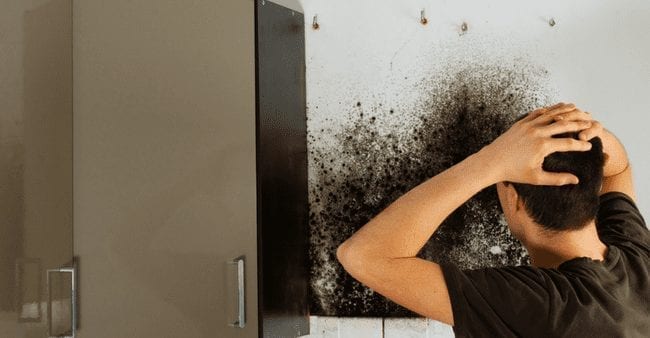Discover Smart Ways to Detect Concealed Leaking Water Lines
Discover Smart Ways to Detect Concealed Leaking Water Lines
Blog Article
We have found the article about Finding hidden leaks below on the web and figured it made sense to discuss it with you on this page.

Early discovery of dripping water lines can minimize a possible catastrophe. Some tiny water leakages may not be visible.
1. Check Out the Water Meter
Every residence has a water meter. Inspecting it is a surefire way that assists you uncover leakages. For starters, turn off all the water sources. Guarantee no one will flush, make use of the faucet, shower, run the washing machine or dish washer. From there, go to the meter and also watch if it will alter. Because nobody is utilizing it, there must be no motions. If it moves, that indicates a fast-moving leakage. Similarly, if you find no changes, wait a hr or 2 as well as check back once again. This implies you may have a slow leakage that might also be underground.
2. Inspect Water Consumption
Assess your water costs and also track your water consumption. As the one paying it, you must notice if there are any kind of disparities. If you spot sudden changes, regardless of your intake coinciding, it means that you have leaks in your plumbing system. Keep in mind, your water expense should fall under the same range each month. A sudden spike in your costs shows a fast-moving leakage.
Meanwhile, a steady boost every month, despite the exact same practices, shows you have a slow leak that's also gradually rising. Call a plumber to extensively check your building, particularly if you feel a cozy location on your flooring with piping beneath.
3. Do a Food Coloring Examination
When it comes to water intake, 30% comes from toilets. If the shade somehow infiltrates your dish during that time without flushing, there's a leakage between the tank as well as dish.
4. Asses Outside Lines
Don't neglect to check your exterior water lines also. Should water leak out of the link, you have a loosened rubber gasket. One small leak can throw away heaps of water and also spike your water expense.
5. Evaluate and Evaluate the Circumstance
House owners must make it a habit to check under the sink counters and even inside cabinets for any kind of bad odor or mold and mildew development. These two red flags indicate a leakage so punctual focus is called for. Doing regular assessments, even bi-annually, can save you from a significant trouble.
Examine for discolorations and weakening as a lot of pipelines as well as devices have a life expectations. If you think dripping water lines in your plumbing system, don't wait for it to rise.
Early detection of dripping water lines can mitigate a possible disaster. Some small water leakages may not be noticeable. Checking it is a guaranteed way that assists you uncover leaks. One small leak can squander tons of water as well as surge your water bill.
If you believe dripping water lines in your plumbing system, do not wait for it to intensify.
How to Know If Your Home Has a Hidden Leak
Water Meter Reveals Inexplicable Water Usage
If you’d like to test whether or not there’s a leak somewhere in your home, you can do this using your water meter. Here is how to conduct the test:
Don’t use any water in your home for at least 30 minutes; this also means not turning on faucets or water-using appliances.
Go outside, and check your water meter for activity.
If your water meter shows that there was activity, even though no one was using any water, this proves that there is a leak in your home.
Visible Mold or Mildew Growth
Leaks behind walls create moist, dark environments that allow mold and mildew to grow and thrive. Eventually, you might see mold growth forming on the wall closest to a hidden leak.
If mold is growing in an area that receives a high amount of moisture, such as a bathroom, it may simply be an indication that better ventilation is needed. However, if you see mold growth on a wall or the ceiling in an area where you would not expect, you probably have a hidden leak.
Musty, Mildew Odor
Sometimes you might not be able to see the mold or mildew that is growing as a result of a leak. However, the smell can give the problem away just as easily. If you catch a whiff of something musty, there’s a good chance that old water is collecting somewhere in your home that you can’t see.
Stained/Warped Walls, Ceilings, or Floors
When your home soaks up water, a variety of red flags can become visible, including ceiling stains, bubbling drywall, warped walls, and sagging floors. While these issues can be caused by excess humidity, they can also be signs that a pipe or plumbing connection has started leaking behind your walls.
Inexplicably High Water Bill
After a while, you get a general sense for what your water bill should be. If you own a pool or sprinkler system, your bill will tend to be higher during summer. However, if you receive a water bill that seems especially high, and you can’t figure out what caused it, then you may have a hidden leak somewhere that’s increasing your bill.
https://www.plumbingjoint.com/blog/2019/july/how-to-know-if-your-home-has-a-hidden-leak/

I stumbled upon that review about Leaking water lines when perusing the search engines. Are you aware of somebody else who is occupied with the topic? Be sure promote it. Bless you for your time. Don't hesitate to come visit our site back soon.
Certified experts available. Report this page